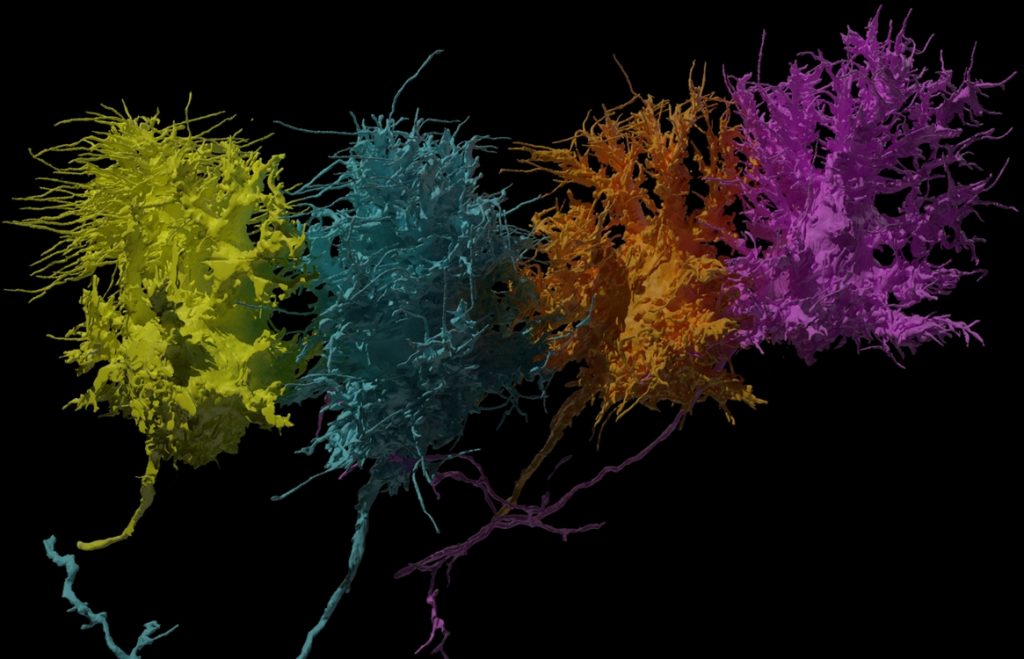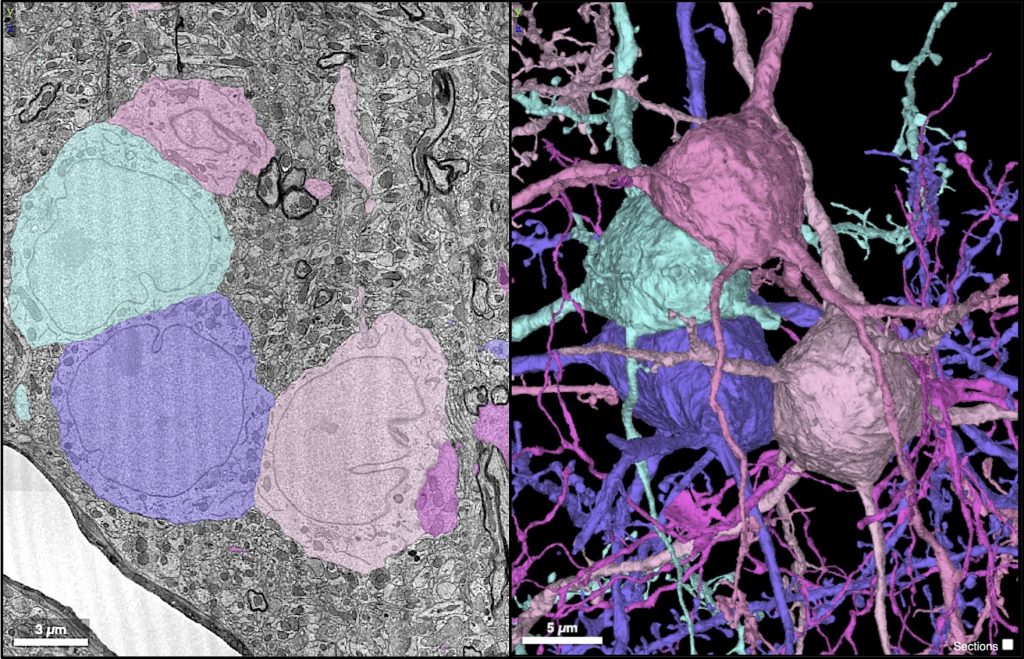RESEARCH
Neuron reconstructions from high-resolution images
Interested in learning more?
Schedule a Meeting
Areas of Investigation

Neural circuit developments in the cerebellar cortex, the dendritic extensions that run long parallel fibers, and the morphological variability of Purkinje cells.
Through this research, we were committed to contributing to the ongoing conversations surrounding the digital reconstructions of brain development, structure, and function and to exploring how computational models can help in deciphering the organizational principles of large-scale brain networks.
The intercommunication between sub-organelles when adjacent cell bodies perform interactions
The main contribution of this study is the successful visualization of sub-organelle structures, which makes it possible to identify different cell types in computer-assisted reconstruction algorithms and suggest a generative model for neuronal alignmen

Future Research Plan
Through these projects, we have gained a comprehensive understanding of theoretical foundations of the entire brain structure and aim to apply them to real-world problems in my desired field. We plan to apply realistic modeling to various research problems, such as how predictive models can describe pathological processes based on network topology, how disease propagations shape brain-network topology to generate neural response, and how malignant cells interact with their surrounding microenvironment to shape the maladaptive process. Our ultimate goal is to eliminate the barriers between people and technology and make technology more accessible to the pathological field.